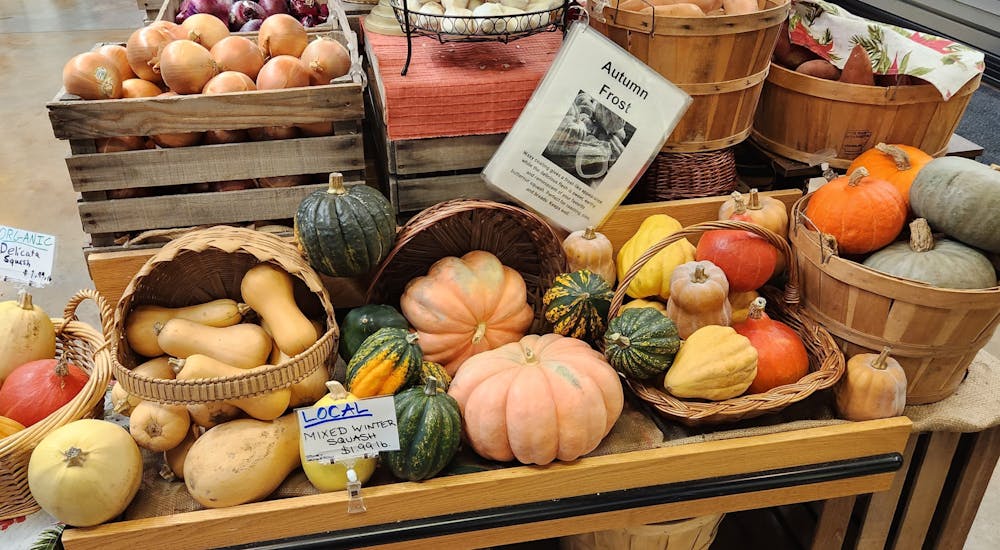Oxford has two principal sources of locally grown and produced food: the Oxford Farmers Market Uptown on Saturday mornings and Moon Co-Op Market in Tollgate Mall every day.
In recent years, Miami students have shown much more interest in eating healthy food. At MOON Co-Op, Miami students accounted for one-fourth of the shoppers just a few years ago, but now they are well over half of the shoppers. So this space in The Miami Student is devoted to suggestions for obtaining and preparing healthy food grown and produced in the Oxford area.
Craig Harkrider is typical of Oxford’s local growers. Craig has two full-time jobs. Miami students may encounter Craig in his full-time Miami job without knowing it, because Craig runs the box office. If you’ve ever obtained a ticket for a performance in Millett Hall or Hall Auditorium, Craig has helped you, perhaps indirectly online, if not face-to-face.
On Saturday mornings, you can find Craig at the Farmers Market Uptown. He’s there every Saturday year-round, in the summer heat and the winter cold. Craig and his wife Sharon have a farm outside of town called Stoney Hedgerow. This time of year, they have really weird-looking winter squash and multi-colored eggs.

On Saturday mornings, you can find Craig at the Farmers Market Uptown. He’s there every Saturday year-round, in the summer heat and the winter cold.
Winter squash is actually grown in the summer, but gets its name because most varieties can be stored through the winter thanks to the thick rind. The English word “squash” derives from the Narragansett word askutasquash, which means “a green thing eaten raw.” “Squash” as a verb, meaning to crush, as well as the racquet sport, derives from Romance languages and has no connection with the etymology of the food.
Craig’s squashes have exotic names. Examples include Autumn frost, Blue Kuri, Blue Prince, Cinderella’s Carriage, Red Kuri, Starry Night, Sunshine Kabocha, Tetsukabuto, Thelma Sanders and Yuxi Jiang Bing Gua.
Here’s how to cook one of these weird squashes. First, cut open the squash. If you can’t get a knife through the raw squash, don’t hurt yourself. Microwave the whole squash for five minutes, and then cut it open.
Chop a large squash into several pieces, remove the seeds, put the pieces in a baking dish, fill the bottom of the dish with some juice or water, and either microwave for around 10 minutes or bake in the oven at 400 degrees for around 30 minutes.
When you lift the lid of a Stoney Hedgerow egg carton, instead of a uniform array, you are dazzled by a rainbow assortment of colors. Craig explains that the multiplicity of colors results from having many breeds of heritage hens.
Craig told me that his chickens are very happy, and happy hens lay more and better-tasting eggs. How does Craig know that his chickens are happy? His answer: because they are chatting away with each other.
Enjoy what you're reading?
Signup for our newsletter
In what language, I asked. Chicken talk. Craig, do you speak chicken talk? No, but I understand what they are saying, and they say they are happy. What are they happy about? They get to roam around in the fields mowing the grass.




